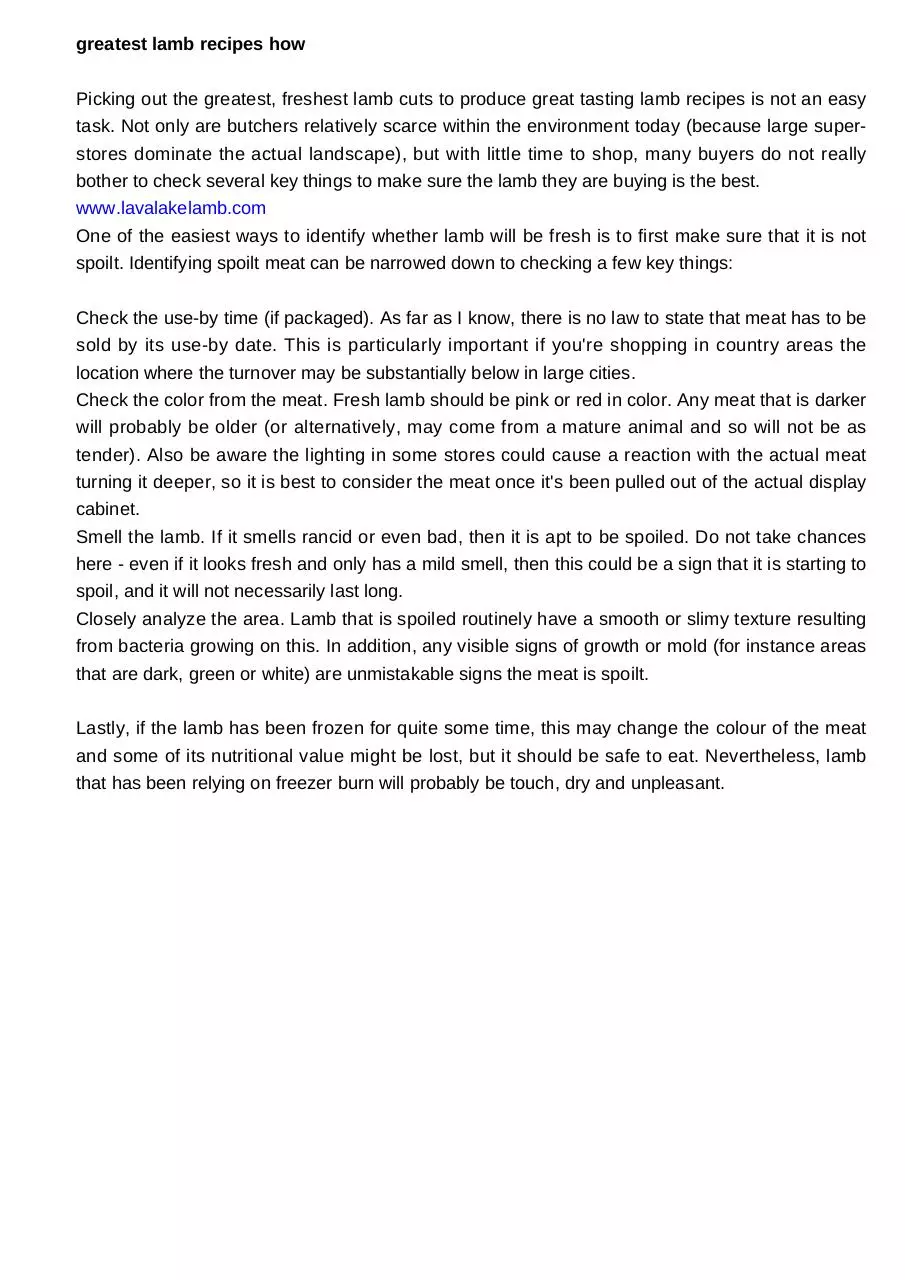greatest lamb recipes how1621 (PDF)
File information
This PDF 1.4 document has been generated by / iTextSharp™ 5.4.1 ©2000-2012 1T3XT BVBA (AGPL-version), and has been sent on pdf-archive.com on 08/08/2014 at 12:12, from IP address 89.201.x.x.
The current document download page has been viewed 487 times.
File size: 2.57 KB (1 page).
Privacy: public file

File preview
greatest lamb recipes how
Picking out the greatest, freshest lamb cuts to produce great tasting lamb recipes is not an easy
task. Not only are butchers relatively scarce within the environment today (because large superstores dominate the actual landscape), but with little time to shop, many buyers do not really
bother to check several key things to make sure the lamb they are buying is the best.
www.lavalakelamb.com
One of the easiest ways to identify whether lamb will be fresh is to first make sure that it is not
spoilt. Identifying spoilt meat can be narrowed down to checking a few key things:
Check the use-by time (if packaged). As far as I know, there is no law to state that meat has to be
sold by its use-by date. This is particularly important if you're shopping in country areas the
location where the turnover may be substantially below in large cities.
Check the color from the meat. Fresh lamb should be pink or red in color. Any meat that is darker
will probably be older (or alternatively, may come from a mature animal and so will not be as
tender). Also be aware the lighting in some stores could cause a reaction with the actual meat
turning it deeper, so it is best to consider the meat once it's been pulled out of the actual display
cabinet.
Smell the lamb. If it smells rancid or even bad, then it is apt to be spoiled. Do not take chances
here - even if it looks fresh and only has a mild smell, then this could be a sign that it is starting to
spoil, and it will not necessarily last long.
Closely analyze the area. Lamb that is spoiled routinely have a smooth or slimy texture resulting
from bacteria growing on this. In addition, any visible signs of growth or mold (for instance areas
that are dark, green or white) are unmistakable signs the meat is spoilt.
Lastly, if the lamb has been frozen for quite some time, this may change the colour of the meat
and some of its nutritional value might be lost, but it should be safe to eat. Nevertheless, lamb
that has been relying on freezer burn will probably be touch, dry and unpleasant.
Download greatest lamb recipes how1621
greatest lamb recipes how1621.pdf (PDF, 2.57 KB)
Download PDF
Share this file on social networks
Link to this page
Permanent link
Use the permanent link to the download page to share your document on Facebook, Twitter, LinkedIn, or directly with a contact by e-Mail, Messenger, Whatsapp, Line..
Short link
Use the short link to share your document on Twitter or by text message (SMS)
HTML Code
Copy the following HTML code to share your document on a Website or Blog
QR Code to this page

This file has been shared publicly by a user of PDF Archive.
Document ID: 0000178165.